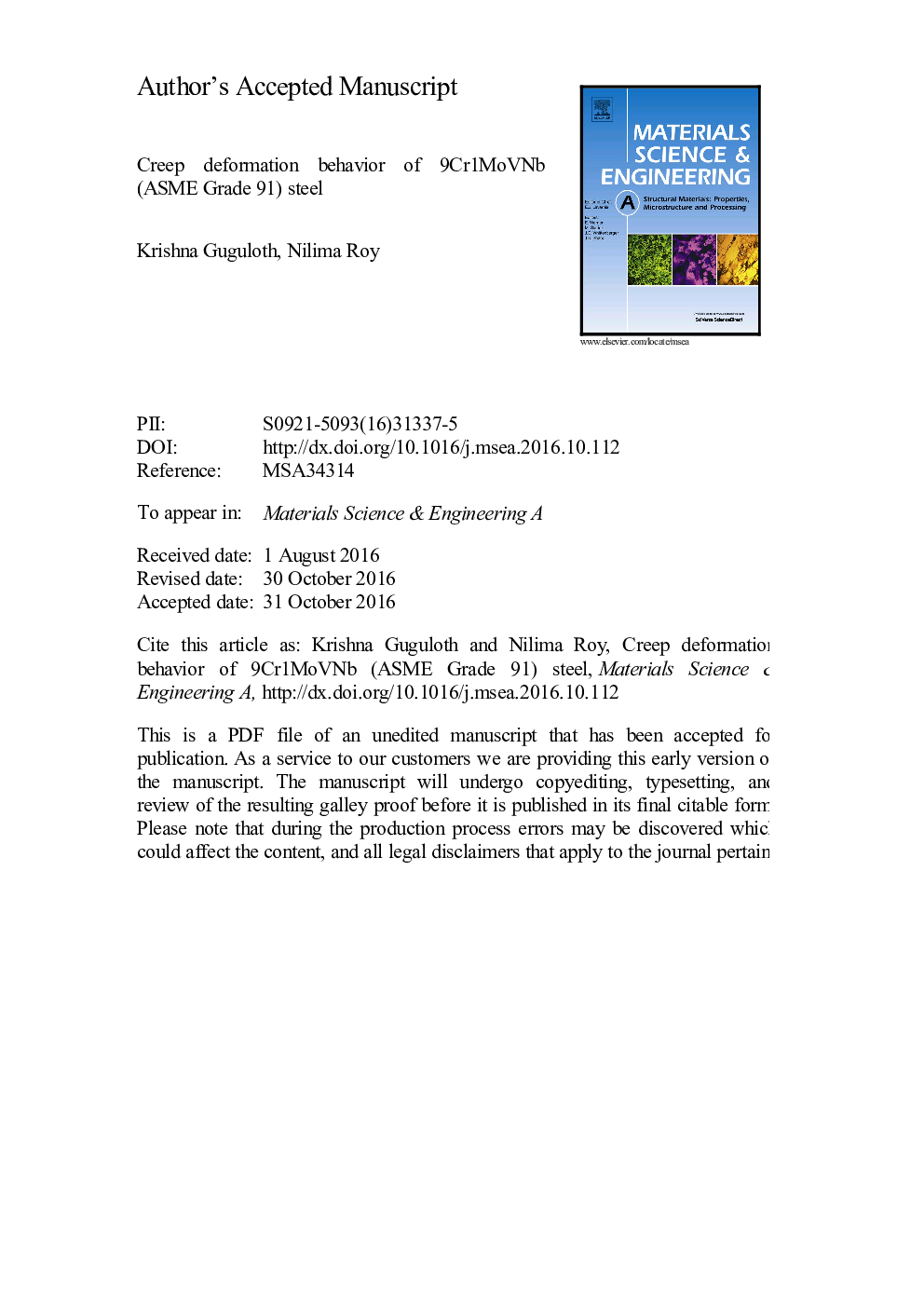| Article ID | Journal | Published Year | Pages | File Type |
|---|---|---|---|---|
| 5456782 | Materials Science and Engineering: A | 2017 | 50 Pages |
Abstract
Detailed investigations have been performed to examine the creep deformation behavior and microstructural evolution of modified 9Cr-1Mo steel which is widely used in high temperature power plant component. The creep data were analysed in terms of the temperature compensated power law and Monkman-Grant relation. The creep activation energy of Grade 91 steel was determined with 543±30 kJ/mol without threshold stress compensation, while after correcting the threshold stress; the activation energy is decreased to 303±15 kJ/mol. This value is close to the activation energy of creep in α-Fe. The calculated threshold stress showed a strong dependence on temperature. The creep behavior of the steel was described by the modified Bird-Mukherjee-Dorn relation. The rate controlling creep deformation mechanism was identified as the edge dislocation climb with stress exponent of n=5. Further, the value of creep damage tolerance factor (λ) and stress exponent was used to identify the cause of creep damage, showed significant difference in the high and low stress regimes. The fracture surface morphology of the ruptured specimens was studied by scanning electron microscopy to further elucidate the failure mechanisms. Whereas deformed microstructure was examined by transmission electron microscopy. The significant decrease in creep strength in the alloy has been attributed to microstructural degradation associated with precipitates and dislocation substructure.
Related Topics
Physical Sciences and Engineering
Materials Science
Materials Science (General)
Authors
Krishna Guguloth, Nilima Roy,
